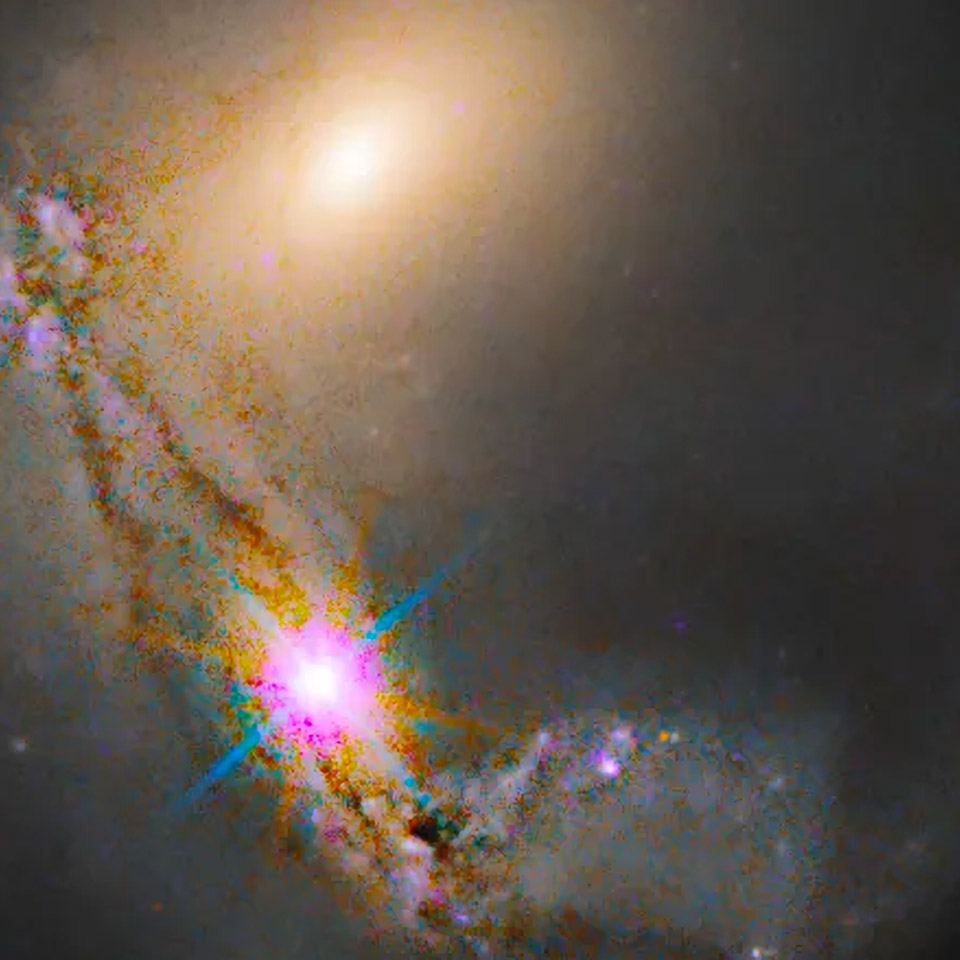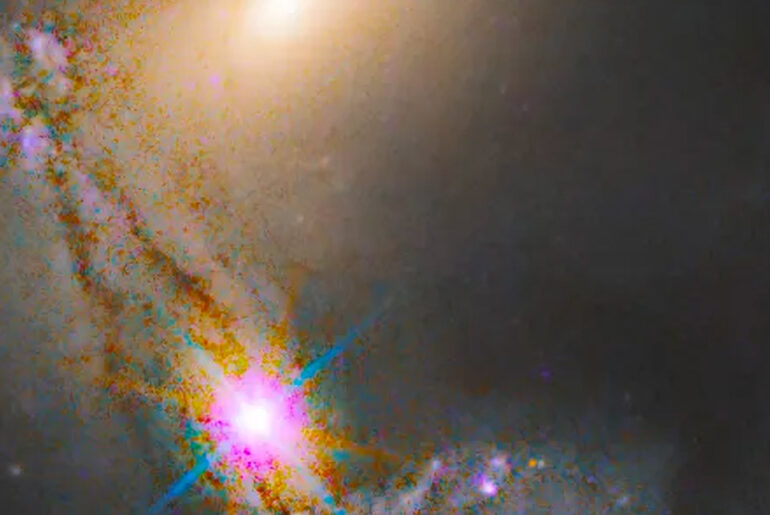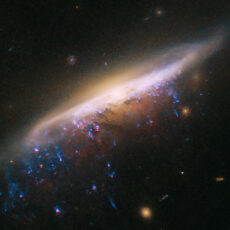
NASA / ESA’s Hubble Space Telescope observes a group of interacting galaxies known as LEDA 60847, located roughly 187 million light-years from Earth. LEDA 60847 is actually classified as a active galactic nuclei, or AGN, due to a supermassive black hole in the galaxy’s central region that is accreting material.

The AGN emits radiation across the entire electromagnetic spectrum and makes the galaxies shine extremely brightly. Astronomers study powerful AGNs that are relatively nearby to better understand how supermassive black holes can grow and affect galaxies. Put simply, galaxy mergers are common cosmic phenomenon, as larger galaxies are the result of smaller galaxies merging.
- LEGO NASA Space Set - This adult LEGO set features the Space Shuttle Discovery and the Hubble Space Telescope from NASA’s 1990 STS-31 mission,...
- Solar System Exploration - Unlock the mysteries of our solar system with this engaging 2,354-piece project, packed with authentic details and...
- Shuttle Features Galore - The space shuttle model has an opening payload bay, retractable landing gear, opening cockpit, moving elevons, space arm,...
This image of LEDA 60847 combines ultraviolet, visible, and near-infrared data from Hubble. The ability to see across all those wavelengths is one of the things that makes Hubble unique. Different types of light across the electromagnetic spectrum tell astronomers different things about our universe,” said the NASA Hubble Mission Team.
[Source]










